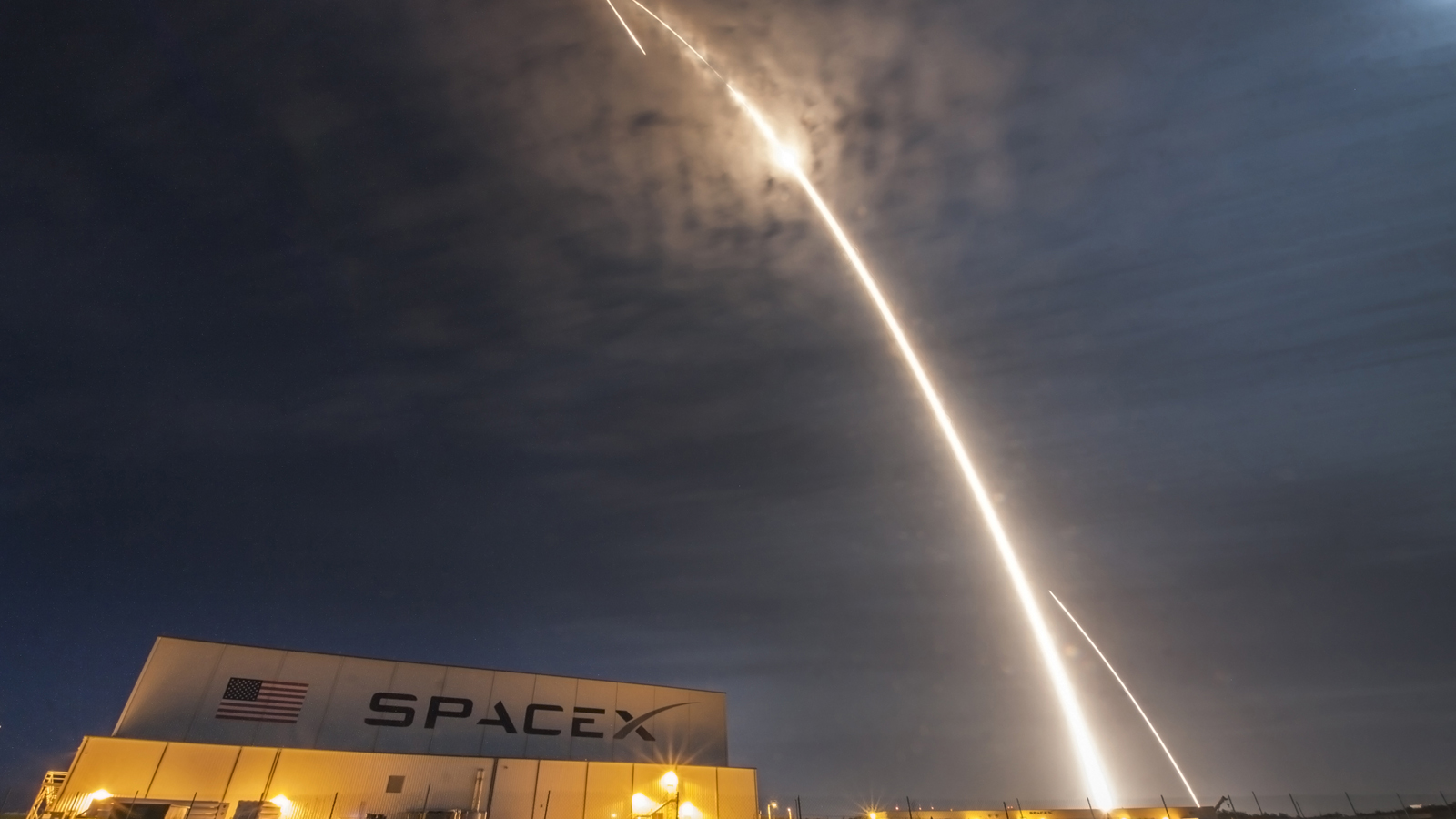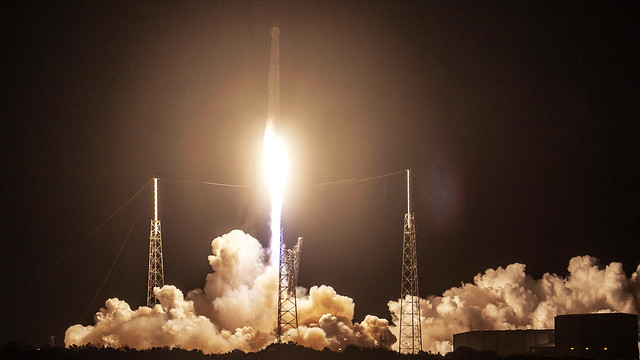SpaceX Dragon sticks dry landing, big news for end of 2016
Meteorologist/Science Writer
Monday, July 18, 2016, 2:45 PM - After pulling off another flawless dry-land touchdown early Monday morning, SpaceX is going to need more room to store its recovered booster rockets. Good thing they just chose which of them is going to be relaunched into space later this year.
They did it again!
Launching their latest Dragon cargo run to the International Space Station, at 12:45 a.m. EDT Monday, SpaceX successfully landed another Falcon 9 booster rocket. This time, rather than having it touch down on their automated drone ship out on the Atlantic Ocean, the 1st stage booster came right back to Kennedy Space Center, to land not far from where it had lifted off.

This long-exposure image captures the engine burns of SpaceX's Falcon-9 booster rocket, as it launched their Dragon CRS-9 mission to the International Space Station. The launch trail is shown in the foreground, the end of the de-orbit burn is caught top-center, just left of the launch burn trail, and the landing burn is shown in the distance. Credit: SpaceX
|
|
|
| Monday's Dragon CRS-9 mission launch, shown during liftoff (left) at 12:45 a.pm. EDT, and during landing (right) just 8 minutes later. Credit: SpaceX | |
In this ninth commercial cargo launch by SpaceX, the Dragon spacecraft is carrying over 2,200 kg of food, supplies and equipment to the International Space Station. Included in the shipment are several science experiments, designed to investigate DNA sequencing, heart health and magnetic levitation, as well as tests for new solar cells and for how modern computers respond to space radiation.
Stowed in Dragon's "trunk" is the newest piece of the space station - the International Docking Adapter-2 (IDA2). This bit of hardware will be attached to the exterior of the station, and will allow spacecraft from many different nations and manufacturers to dock at the station just as easily as the Soyuz, Dragon and Cygnus spacecraft do now, without having to adhere to any specific docking system design.
"It's a passive system which means it doesn’t take any action by the crew to allow docking to happen and I think that's really the key," David Clemen, Boeing's director of Development/Modifications for the ISS, said in a NASA statement.
This docking adapter is the second in its line. The first was lost during the Dragon CRS-7 launch to the ISS, back on June 28, 2015, when the rocket and its payload disintegrated just a few minutes after liftoff.
Dragon CRS-9, now safely in orbit, will take roughly 2 days to fly to the ISS. Here, in a short animation SpaceX showed during their webcast, is how it will accomplish this feat.
Prior to this latest booster landing safely on the ground - the fifth successful Falcon-9 1st stage landing for the company - SpaceX's hanger at Kennedy Space Center was already at capacity.
According to Loren Grush, at The Verge, the company is supposedly looking for more hanger space in the area, but based on what SpaceX's vice-president of flight viability, Hans Koenigsmann, mentioned in a press conference on Saturday, they have chosen one of the recovered boosters to make the very first re-launch of their re-usable rocket system later this year. No word yet on exactly which mission will take it to space again, however it will likely launch sometime in September or October.
The booster that will have this honour is the Falcon-9 rocket from the April 8, 2016 launch. This booster carried the last Dragon cargo craft, CRS-8, on its way to the ISS, and then performed the first successful touch-down on the droneship "Of Course I Still Love You," which was positioned out on the Atlantic Ocean.
The first successfully-landed booster, which launched Orbcomm satellites into orbit on December 22, 2015 and then landed at Cape Canaveral minutes later, will not be re-flown, and will likely end up as a display piece at SpaceX HQ due to its uniqueness.
Sources: SpaceX | NASA | Loren Grush/The Verge
Watch Below: SpaceX hosted their entire launch livestream on the web, early Monday morning. Watch all 31 minutes of the lead-up, launch and landing below.





